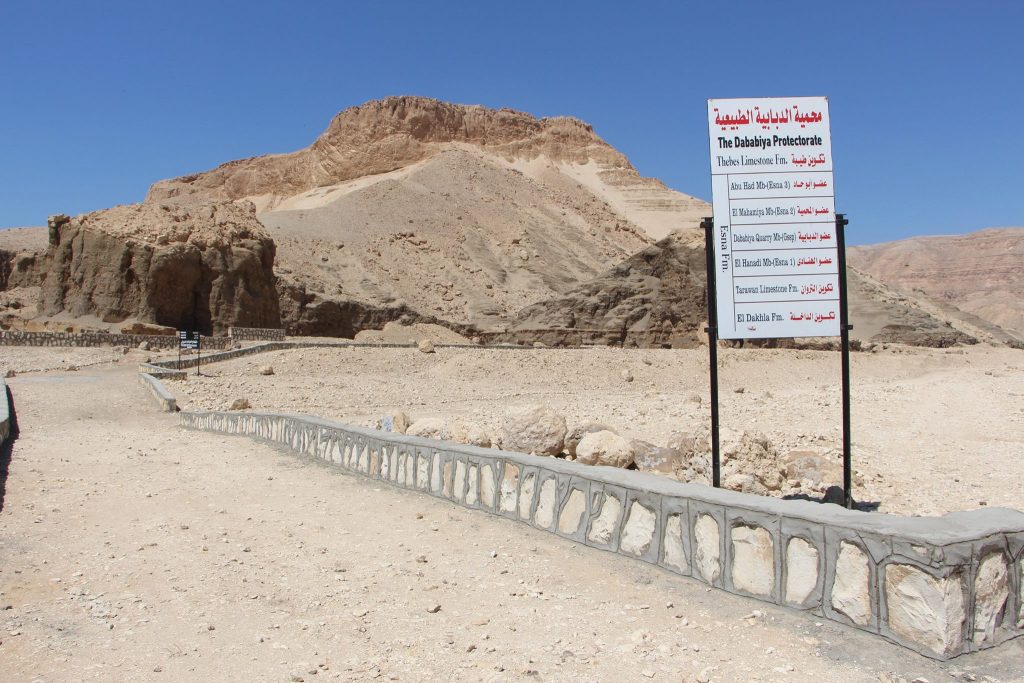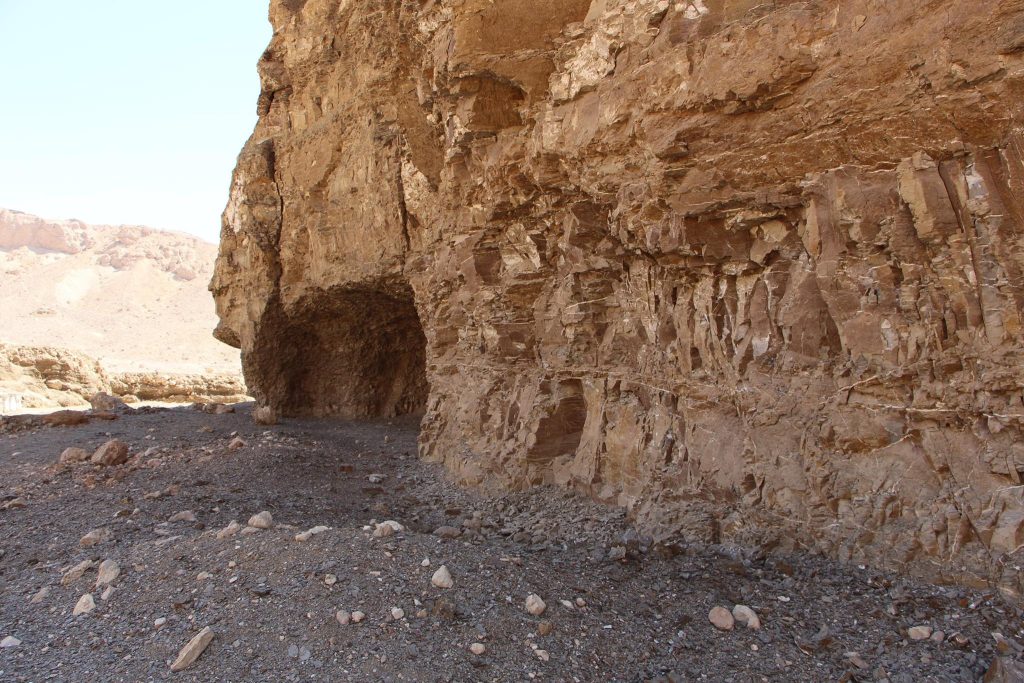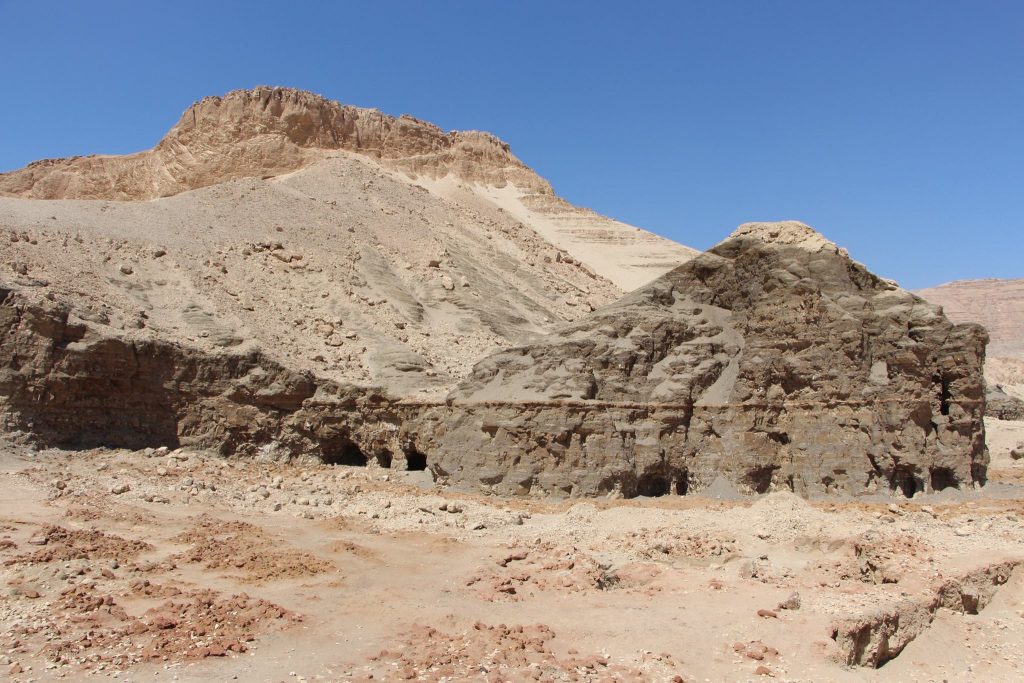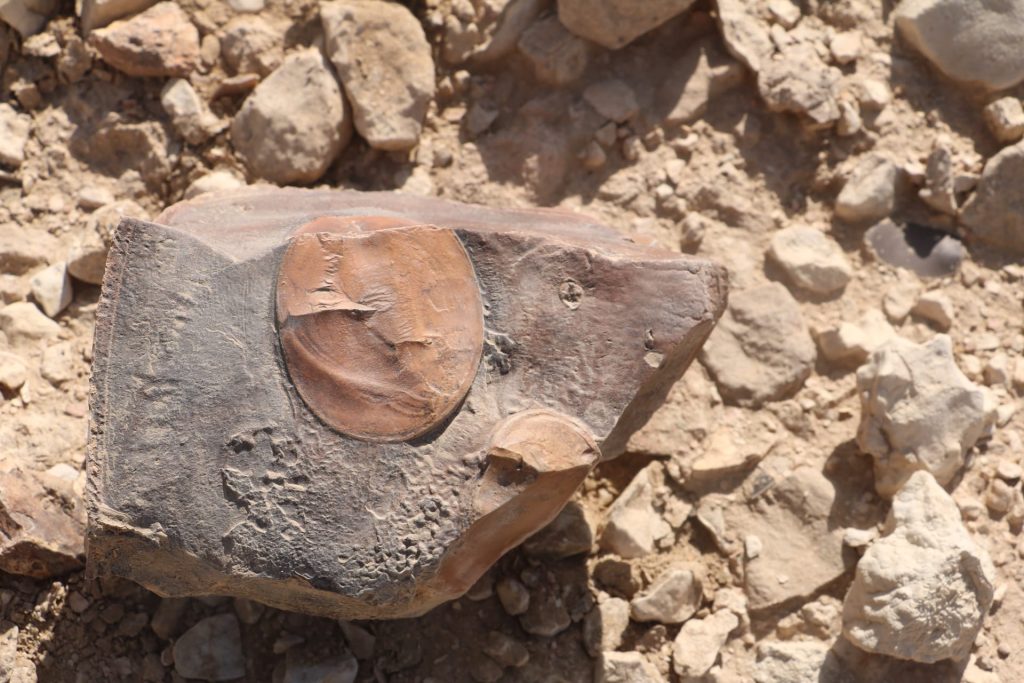Al-Dabbabiya Natural Protectorate
Global Boundary Stratotype Section and Point (GSSP)
About 35 kilometers south of Luxor lies the Al-Dabbabiya Natural Protectorate. This desert area may seem ordinary, but it holds important secrets that are millions of years old. It is one of the most significant places in the world for studying Earth’s climatic history, marking a key moment that occurred 56 million years ago. Dabbabia is more than just rocks; it is a global scientific landmark, a haven for biodiversity, and an emerging spot for sustainable tourism.

A Geological Time Capsule
At first glance, Dabbabia’s sun-baked hills may look like ordinary desert stone. However, they hold an important record of the Paleocene–Eocene Thermal Maximum (PETM), a major climate event that happened 56 million years ago. During the PETM, a large amount of carbon was released into the atmosphere, causing global temperatures to rise by 5–8°C. This rise triggered ocean acidification, ecosystem collapse, and rapid changes in the environment. This ancient crisis is similar to today’s climate change, making Dabbabia an important site for scientists studying the future of our planet.
Dabbabia is significant because it is a Global Boundary Stratotype Section and Point (GSSP), also known as the “golden spike,” which marks the beginning of the Eocene Epoch. This global reference point is located 1.58 meters above the base of the DBH section in the Dababiya Quarry on the east bank of the Nile. It defines the transition between two geological eras. Its clarity and completeness make it the world’s reference for this important moment in Earth’s history.
Luxor Tours & Activities
Looking to save some costs on your travel? Why not join a shared group tour to explore Luxor, Egypt? Here are some activities you might be interested in:

Decoding the Stones: The Science of Dabbabia
Dabbabia’s layered rocks are a record of Earth’s history, showing isotopes, fossils, and chemical signs. The Carbon Isotope Excursion (CIE), an important part of the Paleocene-Eocene Thermal Maximum (PETM). This change in the carbon cycle indicates the quick warming that changed the planet.
Key features of Dabbabia’s geological record include:
– Microfossils: Planktonic and benthic foraminifera fossils show what ancient marine ecosystems looked like and how life adapted to extreme conditions.
– Nannoplankton Signatures: The presence of Rhomboaster and Discoaster species, which are specific to the PETM, highlights this climate change.
– Dinoflagellate Blooms: A large number of Apectodinium, a heat-tolerant dinoflagellate, suggests rising ocean temperatures during the PETM.
Even though challenges like recrystallization in the Esna Shale Formation can hide microfossils, Dabbabia’s layers remain unique. Ongoing international drilling projects explore its depths, revealing more about Earth’s ancient climate changes.

A Living Desert Ecosystem
Dabbabia is not only important for its geology, but it is also a lively ecological habitat. The area protects unique desert plants and animals that thrive in the dry conditions. This combination of scientific and ecological value highlights Dabbabia’s importance as a natural heritage site. It shows that Egypt’s story goes beyond human history and connects to the planet’s beginnings.

Egypt’s Vision: The Dabbabia Geological Park
Luxor University and local authorities are working together to turn Dabbabia into the Dabbabia Geological Park. This park will focus on science, culture, and sustainable tourism. The plan includes:
– Eco-Lodge: A solar-powered, eco-friendly place for researchers, tourists, and adventurers, built to reduce environmental impact.
– Craft & Science Center: A space where visitors can learn about geology and conservation while trying local crafts like stone carving and palm weaving.
– International Sculpture Forum: An open-air gallery where artists from around the world create sculptures from Dabbabia’s ancient stone, telling the story of Earth’s climate changes.
This vision combines scientific discovery with cultural preservation. It aims to make Dabbabia a leader in sustainable eco-tourism and a source of pride for Egypt’s natural heritage.

Why Dabbabia Matters to the World
Dabbabia’s story goes beyond Egypt; it is important worldwide. The PETM helps us understand how Earth’s systems react to sudden increases in carbon, offering valuable lessons for today’s climate crisis. By examining Dabbabia’s rocks, scientists learn about how ecosystems can bounce back, how carbon cycles work, and what tipping points might change our planet’s future.
In addition, Dabbabia shows Egypt’s role in protecting and sharing its natural and scientific heritage. It highlights the country’s dedication to preserving not only its ancient monuments but also its prehistoric records.

Explore Dabbabia: A Journey Through Time
If you are visiting Luxor, Dabbabia offers a chance to explore a past that goes beyond the pharaohs. This desert is not just regular sand; it holds important records of Earth’s climate history and supports many forms of life. It also helps us understand what might happen to our planet in the future. Whether you love geology, nature, or simply want to learn something new, Dabbabia Natural Protectorate provides an amazing experience.
Did you know that
By purchasing through our links, you support us at no additional cost.
Thank you for your support. ♥️


